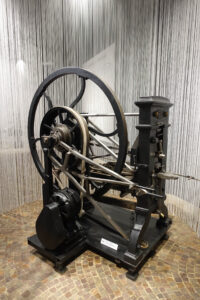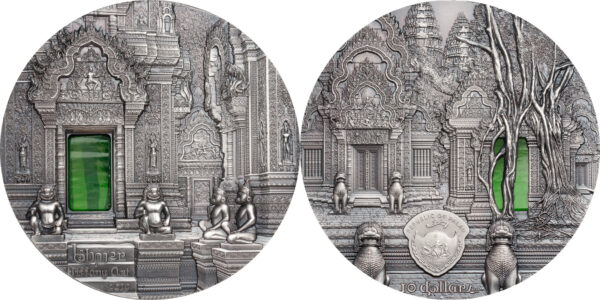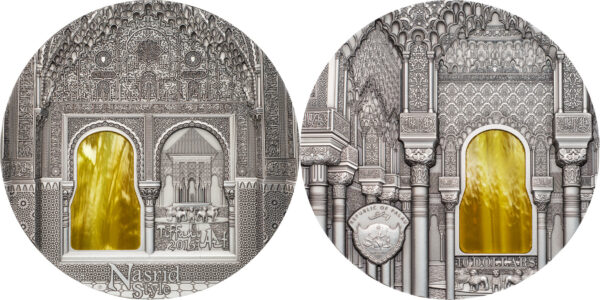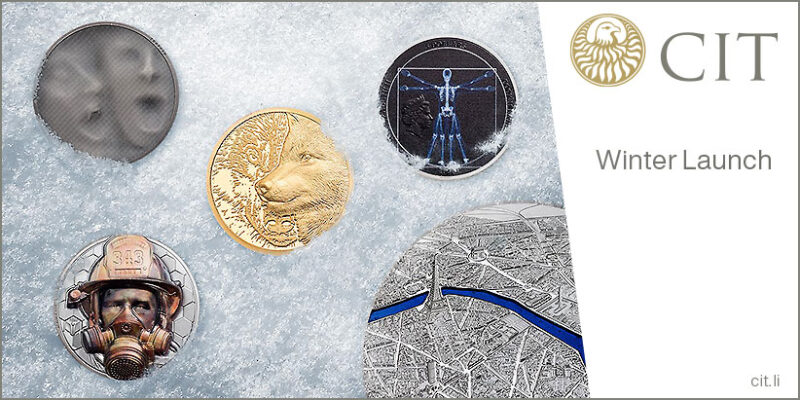For some years now, commemorative coins have been created that can compete with 19th-century medals in terms of their relief. This enables us to achieve a completely new quality of aesthetics for the first time in many decades. Whereas traditional commemorative coins are characterised by their two-dimensional, almost graphic appearance, modern high relief issues are three-dimensional works of art that offer entirely new design possibilities to artists. In this article we want to show you how elaborate and difficult the production of high relief coins is. You will decide for yourself whether the aesthetics are worth the effort.
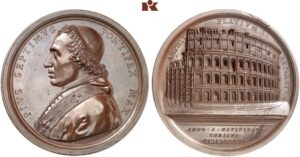
Pius VII. Bronze medal 1807 by T. Mercandetti commemorating the renovation of the outer wall of the Colosseum in 1806. Photo: Lübke & Wiedemann, Leonberg from Künker auction 327 (2019), No. 4357.
The Benchmark: 19th-Century Medals
Anyone who studies medals of the 19th century is fascinated by the plasticity of the depictions. This was only possible due to the incredibly high relief created by minting technicians. Several millimetres in height were the norm. This three-dimensionality was achieved by the screw press, a coining press that applies pressure slowly and evenly to the metal to be deformed. Therefore, the metal could flow better and take on the desired shape: the result was a higher relief, which could be further improved by applying the method several times.
Efficiency Before Beauty
In the 19th century, people had everything but time. The demand for circulation coins increased drastically and, in order to meet the demand, mints were completely re-structured. The knuckle-joint press based on the principle discovered by Uhlhorn replaced the widely used screw presses.
Knuckle-joint presses were much faster. They could produce a huge quantity of coins in very few time with a single strike. A great gain in efficiency, but there were aesthetic consequences. The knuckle-joint press only allowed for a very low relief of a fraction of a millimetre to be created. Thus, in favour of efficiency, coins became two-dimensional – circulation and commemorative coins. That’s how things remained until 2016.

Dr Gerd Wagner gives a presentation on alternative blank production methods at the Technical Forum of the World Money Fair 2016. Photo: UK.
The Change

CIT Coin Invest. “The Great Tea Race”. A silver coin weighing 2 ounces. CoCo CK-2016-0007. Photo: CIT Coin Invest AG.
At the beginning of 2016, experts around the globe learned that there might be a chance to significantly increase the height of reliefs achieved at the time with the usual machines by making use of alternative methods of blank production. Dr Gerd Wagner of Reischauer presented his method of producing blanks with the help of powder, which drastically changed the flow qualities of the metal. The metal became more flexible and adapted more easily to the design of the die. And that made it possible to produce reliefs at completely new heights.
By combining these blanks with the oil-hydraulic presses that are becoming more and more common at mints and transfer the concept of the screw press into the modern age, it was possible to achieve the standards of the 19th century once again. Oil-hydraulic presses are, in fact, usually used in areas where speed is less important and where emphasis is placed on a high pressure that is slowly and very precisely applied to the object to be minted.
It may be merely a coincidence that the first modern high-relief coin was minted in the very same year. CIT Coin Invest, in collaboration with B. H. Mayer’s Kunstprägeanstalt in Munich, presented the depiction of a clipper under the title “The Great Tea Race”. The high relief left anyone without breath who knew the tiniest bit about minting technology. There had not been such a high relief on commemorative coins for decades. CIT Coin Invest registered the brand name smartminting® for the new technology and revolutionized the industry of commemorative coin minting. Thanks to the new minting technique, designers had completely new possibilities.
What smartminting® means probably becomes clearest when you compare two coins of the popular Tiffany Art series, which was issued between 2004 and 2020: one of them was produced before and one after the introduction of smartminting®. Both pieces show a wealth of finest details but the 2019 issue has a plasticity that was unimaginable in 2015.
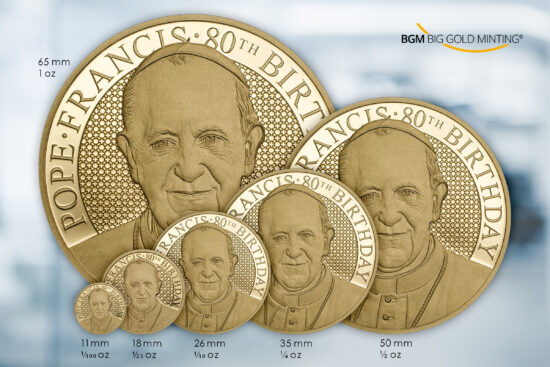
CIT Coin Invest. “80th Birthday of Pope Francis”. Several versions of commemorative coins made by means of Big Gold Minting©. Photo: CIT Coin Invest AG.
Big Gold Minting
In collaboration with B. H. Mayer’s Kunstprägeanstalt, the introduction of smartminting® was followed by the development of Big Gold Minting©. This technique made it possible to achieve a richness of detail on gold coins – with an increased diameter – that had not existed before.

CIT Coin Invest. “Skull No1”. 2016 commemorative coin weighing 1 ounce. CoCo PW-2016-0001. Photo: CIT Coin Invest AG.
Miniature Sculptures
In the same year (2016), “Skulls”, the first of a many series of miniature sculptures by CIT Coin Invest, was created. By doing so, the Liechtenstein company broke new ground and did not only reach typical collectors but also completely different groups of buyers. These coins made it into the everyday lives of their owners as lucky charms and paperweights. Many of these numismatic miniature sculptures are kept in pockets are worry stones or displayed on desks as lucky charms for the New Year.
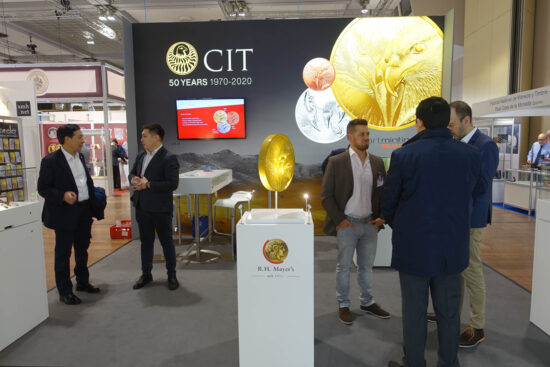
CIT Coin Invest presents a completely new range of possible applications of smartminting® at its booth at the World Money Fair 2020. Photo: UK.
Smartminting Reloaded
Under the heading smartminting® reloaded, CIT Coin Invest presented in 2020 a completely new range of high relief issues that had been further developed in cooperation with B. H. Mayer’s Kunstprägeanstalt. For the first time, it was possible to apply smartminting® to a wide range of materials. And that is not everything: using the example “Majestic Eagle”, CIT Coin Invest illustrated all the possibilities that were now available. The most striking one: for the first time in history of numismatics – this had not even been possible in antiquity or the 19th century – it was possible to adapt the relief entirely to the needs of the designer.
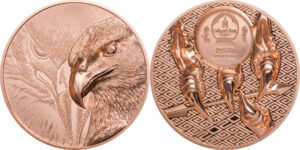
CIT Coin Invest “Majestic Eagle” in copper. 2020 commemorative coin weighing 50 grams. CoCo MN-2020-0009. Photo: CIT Coin Invest AG.
What is meant by this can be best explained by examining a specific coin design – and it is recommendable to also watch the film produced by CIT Coin Invest to fully understand the height of the relief of the piece. Usually, there is much to think about before creating a high relief issue. Some mints even use computer programs to simulate the flow of metal prior to the minting process. The new form of smartminting® makes that unnecessary. A high relief can now be created at any point of the coin, it is not even a problem to create raised parts that are located directly opposite of each other like the eagle’s beak and its claws on the “Majestic Eagle”.
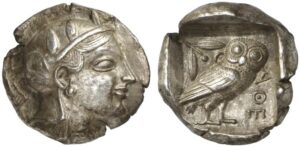
Athen. Tetradrachme, um 455-449. Foto: Lübke & Wiedemann, Leonberg aus Auktion Künker 216 (2012), Nr. 327.
Even in ancient times, this would have been impossible: a high relief on one side always had to be counter-balanced by means of metal on the other side. That’s why all early Greek coins with an impressive relief on the obverse had a quadratum incusum, i.e. a recessed surface on the reverse.
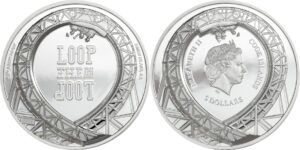
CIT Coin Invest “Loop the Loop”. 2021 commemorative coin weighing 1 ounce. CoCo CK-2021-0001. Photo: CIT Coin Invest AG.
The possibilities of smartminting® open up completely new horizons. We conclude this article with a commemorative silver coin weighing one ounce that appears to be rather inconspicuous at first glance. “Loop the Loop” presents the looping of a roller coaster in perfect 3D – parallel on both sides of the coin. That is spectacular and new. Such a coin would not have been possible before the introduction of high relief minting technology.
Thanks to smartminting®, CIT Coin Invest set aesthetic standards that will hopefully be adopted to many commemorative coins. It would not be the first time that CIT Coin Invest, which is known for its innovative spirit, develops a technology that is used worldwide after a few decades. After all, CIT Coin Invest also created the world’s first colour coin.





